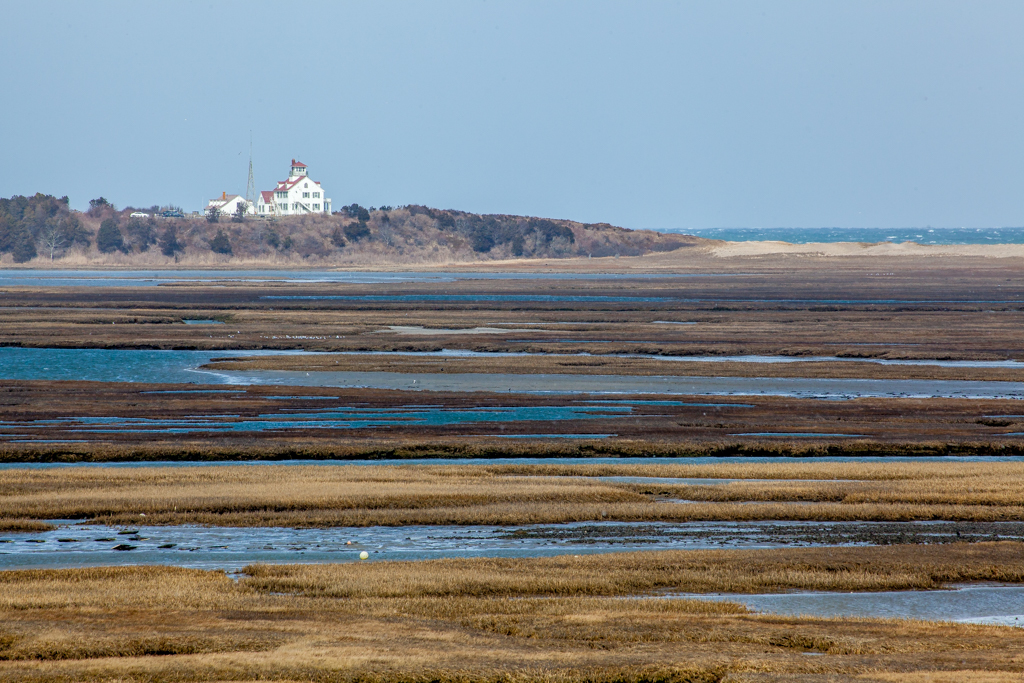This Earthcache will take you to the Coast Guard Beach and a view of the nearby Salt Marshes:

Salt Marshes:
Salt marshes, also known as tidal marshes, are coastal wetlands found in the upper coastal intertidal zone between land and open saltwater. What this means is that the coming and going of the tides floods the salt marshes in regular intervals, resulting in an ecosystem based on deep, waterlogged mud and peat covered with a thick mat of grasses and grass-like plants such as sedges and rushes.
Salt marshes are originally formed through a process of sedimental accretion followed with a decrease in the rate and duration of the flooding events, which allows the plants to colonize the marsh. These plants help increase the rate of sediment retention and contribute their leaves and stems to form muddy mounds that can eventually coalesce into deposition teracces. This further facilitates plant colonization and results in faster sediment trapping in the plant root systems and increases the upward growth of the marsh.
Once established, the salt marshes constitute extremely diverse and productive ecosystems, providing nursery grounds for fish and nesting grounds and sanctuary for birds. Rapid growth of marsh plants as well as efficient utilization of incoming nutrients allows the marsh to yield up to 4 pounds of above-ground production per square meter, rivaling the most intensively cultivated agriculture.
 Barrier Beaches:
Barrier Beaches:
Barrier beaches are narrow, low-lying strips of beach that run parallel to the mainland but are separated from it by a body of water or wetland. These beaches are created and constantly changed by the coastal processes such as erosion. Importantly, the beach in front of you provides a protection to the salt marsh from the effects of the open ocean including storm surges. It originally formed when sand eroded from the cliffs to the North and was carried South and deposited here. Beach grass and other plants helped temporarily anchor the sand in place with their roots, however, the dunes still undergo constant movement.

In order to log this cache, please send me answers to the following questions. Information boards at both waypoints might help you:
1. The increase in sea level threatens the viability of salt marshes. Explain why this is the case and how the marshes can respond.
2. Based on your observations and bearing in mind your answer to the first question, what is going to happen to the marsh in front of you?
3. Coast Guard beach is a barrier beach. Explain what that means.
4. Coast Guard Beach is slowly being eroded away. At what average rate does this happen?
5. While this is strictly optional, any photographs that you might want to upload with your log will be appreciated.
sources:
https://oceanservice.noaa.gov/facts/saltmarsh.html
https://en.wikipedia.org/wiki/Salt_marsh
https://www.britannica.com/science/salt-marsh
